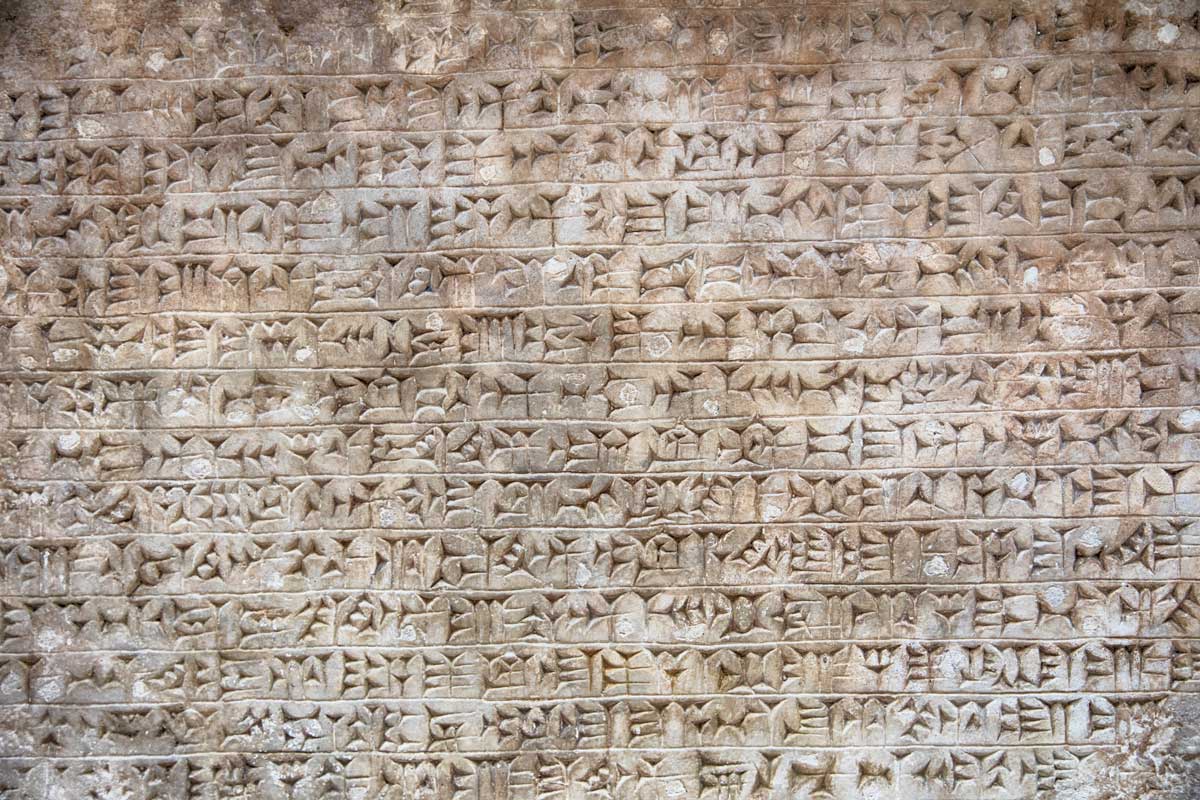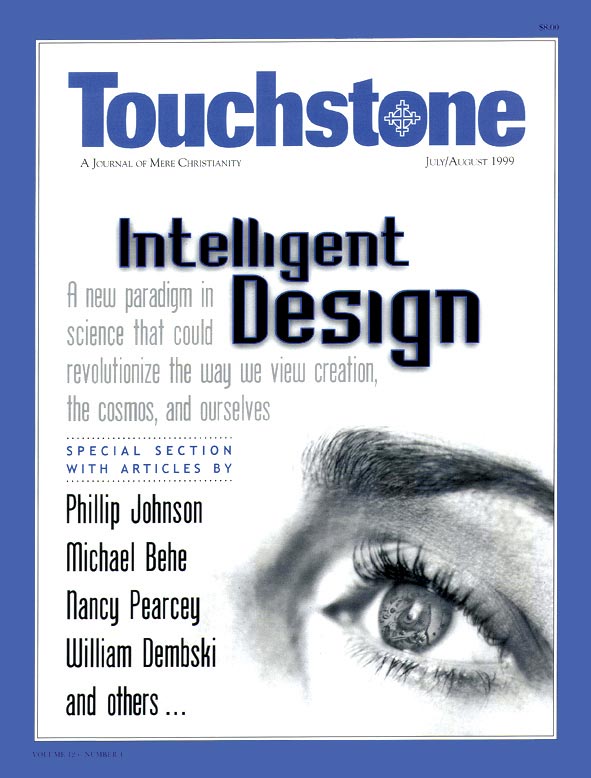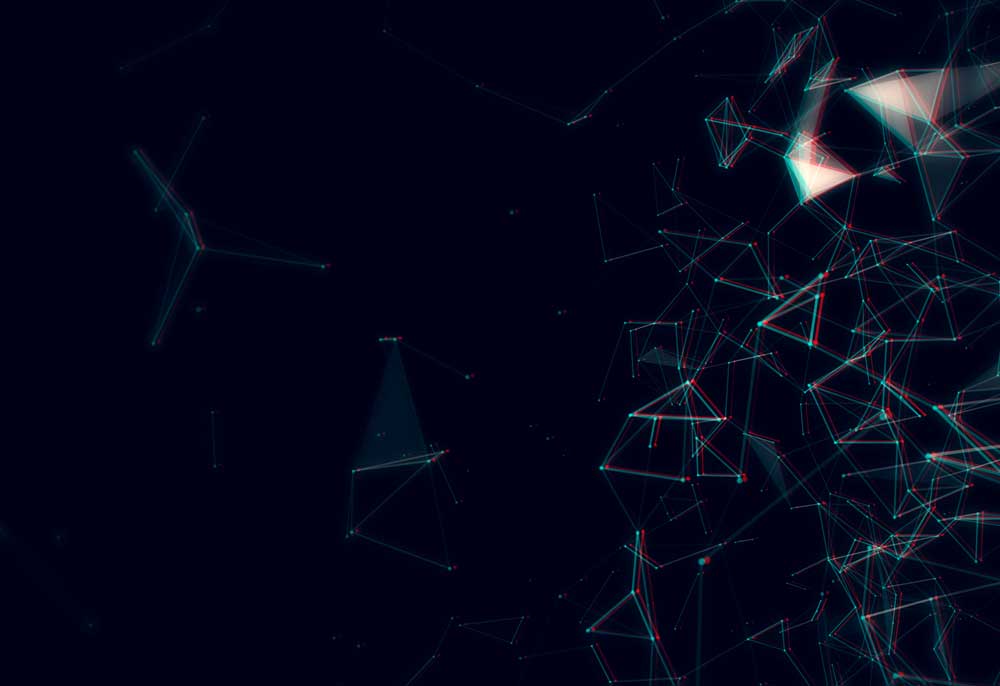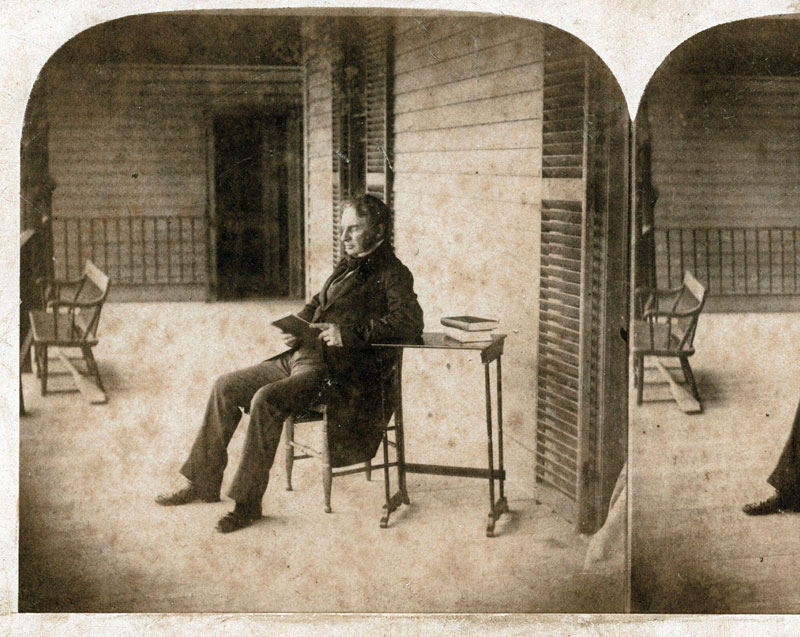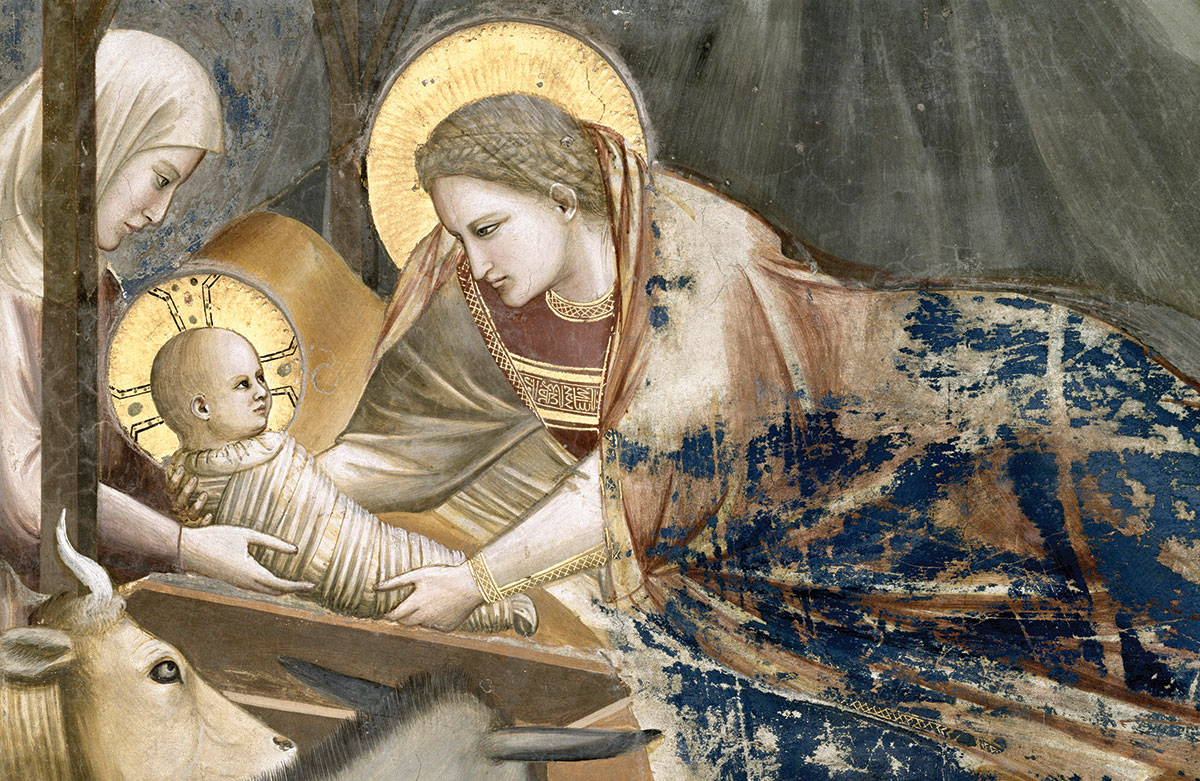The World as Text
Science, Letters & the Recovery of Meaning
Physics was one of my favorite pursuits in high school, where I spent many a happy afternoon leaning over some beaker to measure the specific weight of a portion of sandstone, or testing the mechanical advantage of some pulley or winch, or winding a magnetic field for a little motor I was constructing. Those were short-lived days, nonetheless, almost all of my later education being devoted to subjects usually subsumed under the heading of “letters”: writing, history, literature and languages, theology, philosophy, and whatnot. Modern scientific scholarship has remained very much at the fringes of my mind. Therefore, I was flattered when InterVarsity Press asked me last year to read the galleys of Mere Creation, edited by William Dembski. Moreover, given the four decades or so that separate me from my last formal classes in biology, physics, or mathematics, I was further surprised at how much of the book I was able to understand, this latter circumstance doubtless to be ascribed rather to the extraordinary writing skill of its contributors than to any competence or intelligence of mine.
Professor Dembski and several of those same writers are found within the pages of this current edition of Touchstone, which hereby makes a major incursion into the realm of science. The importance of these articles, whether taken severally or seen united by their common theme, will be obvious to all, nor is it thinkable that someone like myself could add to their manifest authority. Rather, what I mean to do in the present article is to suggest, however faintly, some of the ways in which their shared thesis should recommend itself to the more general consideration of those not trained as scientists.
Science, after all, is not done in a vacuum. At every point, and most especially in its various starting points, scientific pursuit is based on and influenced by a host of popular, political, and other non-scientific presuppositions, cultural biases, and philosophical premises bequeathed from history, particularly the history of thought, religious thought most especially. Those who would separate science from its circumambient cultural world I recommend to check out books like David C. Lindberg’s The Beginnings of Western Science and Lynn White’s Medieval Technology and Social Change. (Both of these are good reads, by the way.)
Indeed, the sheer specialization that has come to characterize the modern study of the physical sciences will tend to render the scientists themselves less aware of the philosophical, legal, historical, and even literary contexts in which their specific disciplines have evolved. After all, it is a rare university doctoral program nowadays that will permit a candidate to concentrate on chemistry and simultaneously take credit seminars in law or theater, or to major in medicine while minoring in music or Shakespeare. At the same time, theologians, historians, speculative philosophers, and men of letters generally, precisely because non possunt omnia omnes, tend to find themselves ever more isolated from the world of the pure sciences. This academic divorce is the subject of almost universal comment and widespread lamentation.
In what follows, therefore, I will suggest how the scientific thesis of these present articles may be related to the world of religion and letters.
Discerning a Text
Our earliest examples of that communicative device known as “writing” come from near the end of the fourth millennium before Christ and were bequeathed to us by a race that historians, taking their cue from the traditional name of the place, chose to call Sumerians. Thus we say that Sumerian was our first written language.
Now it is a most curious feature of these Sumerian texts that, though we are sure they represent a written language, we cannot decipher the first several centuries of them. Only the Sumerian texts from some five or so centuries later are we able to read. The reason for this is very simple. From this later period, about the middle to the end of the third millennium B.C., we happen to possess parallel texts written in a very ancient Semitic tongue, Akkadian, and we are able to use this latter language, much more firmly within the grasp of linguistic history, to make a reasonable reconstruction of later Sumerian vocabulary and grammar. Except for these Akkadian parallel texts, we would not be able to read Sumerian at all. There remain, nonetheless, those several earlier centuries of texts written in Sumerian that we are still unable to read.
With respect to these writings there is one thing, however, about which we are not in doubt—namely, that these are truly writings. That is to say, they really are symbols that carry an encoded meaning. They are, therefore, intentional; they are contrived signs crafted by human hands at the service of human minds in order to communicate with other human minds. They say something, whatever it may be. They form what is called “text,” and it is a distinguishing feature of human beings that they can discern such a thing. Whatever doubts, questions, or conjectures may be raised with regard to the meaning of these texts, it would be irresponsible to suppose that, because we are unable to decipher them, these graphic marks are without intentional meaning. To suppose that they are not texts, not writings, would fly in the face of the massive countervailing evidence.
And exactly what is this evidence? Just how do we know that certain configurations on a clay tablet, or a series of markings on a rock or stick, or even a string of beads, forms a text? How are we able to distinguish these lines and configurations from random scribbling or doodling? What is it about them that causes us to presume, and even insist, that they are intended to convey specific information?
Likewise, why do we not take them to be simply artistic embellishments of some sort, similar to symmetric patterns that appear at far more distant periods of human history? Exactly what quality is it that prompts us to separate, as entirely new and special, the human markings that we find at Sumer and say, “Here is something truly different”?
Should we call that quality “intelligent design”? Well, perhaps, but I submit that this designation is really inadequate. After all, human beings produced very intelligent, highly crafted, graphic designs long before they began to write. If we were asked to explain exactly how a written text differs from these other designs, we might even say that writing shows, in fact, a certain lack of design, in the sense of not being perfectly regular and symmetric. Pieces of writing are marked by a sort of disparity, if you will, such as we would expect to find in a key, say, as distinct from a proportioned and uniform pattern.
To illustrate further: If I discover a sequence of graphic marks like /+0/+0/+0/+0 and so forth around the top of a vase, I am not likely to take this as an example of “text.” Such a series of symbols is simply too regular to convey specific “information” of the sort I would expect in a spoken sentence, and I readily suspect that, while such marks demonstrate an intelligent design, that design pertains to the realm of decorative art rather than of writing.
The latter contrivance, writing, though it certainly displays a structured form and consistency, is also characterized by a greater complexity, a subtle irregularity, and even a measure of unpredictability in its sequence; its various symbols do not fall into place with the serial recurrence of a perfectly metric pattern, but in certain periodic conjunctions, even elaborate configurations, appearing at intervals not dictated by concerns of symmetry. Most people know when they are looking at a piece of writing; they are able to distinguish it from both random scribblings on the one hand and purely esthetic designs on the other.
However, writing does have this quality in common with artistic design—that they are both recognized as “intentional,” as distinct from random or haphazard. Both writings and artistic patterns are crafted with some purpose in mind, much as one would construct a tool. Indeed, this analogy with tools is worth considering. Ancient history has left us many examples of tools and implements whose distinct purpose we can only guess at. We look at certain ancient stone contrivances and can be perfectly sure that they were hand-held implements designed for a specific purpose, while the latter remains a mystery to us. That is to say, even though we are not sure of their purpose, we are nonetheless sure that they had a purpose, and this is how we recognize them as tools.
Such reflections demonstrate our ability to discern intelligibility even in things that remain unintelligible to us. We human beings can detect the presence of “mind” and the intent to convey “information” even in those instances when we are unable to decipher exactly what that information is or what that mind is trying to say. Human reason has an innate capacity, that is, for recognizing the presence of rationality. We are able to know when we are, in fact, dealing with a text.
The Heavens Declare
An old tradition in Christian literature regards the created world itself as a kind of writing, a text for man’s study. Indeed, because God created all things by his Word, it is not unknown for Christians to think of the created world as a sort of “first edition” of Holy Scripture. “The heavens declare the glory of God,” wrote the psalmist, “day unto day uttereth speech, and night unto night sheweth knowledge. . . . Their line is gone out through all the earth, and their words to the end of the world.” The Apostle Paul would cite these very words, originally describing the message of Creation, as illustrating the universality of the apostolic preaching (Romans 10:18). And did not the psalmist also compare the final dissolution of the heavens to the rolling up of a scroll?
Armed with this biblical warrant, earlier Christians turned to the world with a distinctly exegetical interest that Henri Cardinal de Lubac took some pains to document in the first volume of his Medieval Exegesis. Examples of this interest are ubiquitous in Christian Latin literature. For instance, “these heavens,” said St. Augustine, “these books, are the works of God’s fingers,” and St. Gregory the Great likened “the considered appearance of Creation” (species considerata creaturae) to “a sort of reading for our mind” (quasi quaedam sit lectio menti nostrae). In the twelfth century, Alexander Neckam, the foster brother of Richard the Lion-Hearted, remarked that “the world is inscribed with the pen of God; for anyone who understands it, it is a work of literature.” Similarly and slightly earlier, Rupert of Deutz had commented that, as the Word himself is “the architect of the world, he also . . . composed . . . Holy Scripture,” and the Englishman, Herbert of Bosham, even called the work of Creation “a kind of corporeal and visible Gospel” (velut quoddam evangelium corporale et visibile). Likewise, both Hugh and Richard of St. Victor wrote, “the whole of this sensible world is like a book written by the finger of God.”
Perhaps no one spoke more often on this subject, however, than John Scotus Erigena in the ninth century. Commenting, for example, on the prologue of John’s Gospel, he said that “the eternal light is proclaimed to the world in two ways, namely, Scripture and Creation.” These form the double ladder of the divine ascent; commenting on the same Gospel, Erigena says later: “the first step in climbing the heights of virtue is the letter of Holy Scripture and the appearance of visible things, so that, once the letter has been read and creation examined, they may ascend, by the steps of correct reason, to the spirit of the letter and the rationality of creation.” Erigena speaks of Creation and Holy Scripture as the two garments of Christ, a theme taken up three centuries later by Aelred of Rievaulx.
According to this traditional Christian view, the rationality of the universe, the clearly intentional disposition of its parts in relation to one another and to the whole, especially its relationship to man, is the sustaining subtext of the human narrative and the foundational context of poetry. Within the traditions of the Perennial Philosophy and the Christian faith, there is no need for man to formulate human meaning out of whole cloth. He is expected to presume, as more or less obvious, that the universe is possessed of a story line, that it is a rational and poetic place, in the sense of possessing a systematic coherence corresponding to the innate aspirations and essential structure of the human mind. The world and the intellect were made for one another.
Moreover, according to this traditional Christian and classical view, it is this textual quality of the created world that justifies our going to it in pursuit of literary types. For a writer like Dante, for example, if the structure of the world already contains an elaborate message, a message both poetical and rational, Creation may itself be incorporated into man’s literary endeavor as an active component. He finds in the world a pre-existing truth to be explored further by narrative. Beyond mere context, that is to say, Creation provides also the structural types that give coherence to storytelling. Such was the persuasion of the age of faith. “The suggestion that truth, as well as the world, is out there,” wrote Richard Rorty, “is a legacy of an age in which the world was seen as the creation of a being who had a language of his own.” This conviction is part of the Christian birthright.
Literature & Random Evolution
Then came Charles Darwin. Roger Lundin, in his fine book Emily Dickinson and the Art of Belief, describes the profound influence of Darwinian evolutionary theory on the writing of literature in the nineteenth century. Adopting the new persuasion that the physical world is a purely random setting, a heap of formless happenstance, devoid of purpose and lacking in intentional design, some modern writers believed themselves faced with quite a new task—to create meaning out of whole cloth in a world where none existed. The shapeless world of nature could provide them with no “types,” in the sense of permanent, pre-existing intelligible patterns. On the contrary, nature, having nothing in itself to say, lay dormant and inert before their creative talents.
Such was the dilemma faced by Emily Dickinson, Lundin explains. Unable to think that the world is structured with an internal, intelligent coherence discernible to her thought, she felt obliged to undertake a literary task far more onerous than that facing earlier poets. Her vocation, she believed, was to “re-enchant” the world by her poetic imagination. When she observed the universe around her, she believed it was her literary calling to formulate certain literary tropes of her own, and these poetic associations would replace the types that earlier poets, such as Dante, believed to lie at the heart of the world. The difference between a trope and a type, Lundin explains, is that the latter is taken as an objective reality, whereas the former is the progeny of the poetic mind.
Surely there has grown a yawning skepticism in much of literature since the publication of the Origin of Species. Moby Dick, written nearly a decade earlier, had already wrestled with the philosophical implications of a random universe. Darwin, however, provided the latter thesis with a scientific basis, postulating a “survival of the fittest” that would soon become Nietzsche’s “will to power.” Whether explicitly through Nietzsche or more indirectly through the cultural ambience created by the popular acceptance of evolutionary theory, Darwin’s influence on modern literature appears to be immense. Sometimes, in fact, motifs drawn from an evolutionary perspective have formed the subject matter of literature itself; the novels of William Golding and the poetry of Ernesto Cardenal come to mind in this respect.
Darwin’s darker shadow over the world of letters, nonetheless, seems more formal than material. No longer persuaded that they inhabit an ordered, intelligible world, some modern storytellers from Henry James through James Joyce and Herman Hesse to Françoise Sagan have been reduced to examining mainly the current of their own subjectivity. Other authors, as diverse as Leo Tolstoy, Franz Kafka, Albert Camus, Samuel Beckett, Günter Grass, Alain Robbe-Grillet, and Kurt Vonnegut, have endeavored to redeem an indifferent and formless world by either somber humor, or cultivated oscitancy, or grotesque reveling, or even a desperate kind of compassion. Others yet, like John Steinbeck and Ken Kesey, adopting a dogmatic non-teleology as their point of departure, have struggled nonetheless to fill the resulting vacuum with biblical themes, to situate a secularized biblical narrative into a world not made by the biblical God. Still others, like Hemingway, have firmly asserted the virile self in the face of a menacing universe. Alas, the strength even of the manly Hemingway finally failed him, and his last violent act, though marked by a greater aggressive decisiveness, accomplished exactly what Virginia Woolf did in her sad little walk out into the waves.
In addition, the formless and forlorn world of much of modern literature has been adequately matched, in more recent years, by the new directions of postmodern literary criticism. At least in the popular mind, once science had decomposed the world, there was no reason why the world of letters should be exempt. Nor, as we all know, have the Sacred Letters themselves been spared the pervasive dissolution wrought by nihilistic exegesis.
The Reassertion of Form
For all that, it is not the case that every major literary figure of these past two centuries has so completely swallowed, even reluctantly, the bitter pill of cosmic chaos, as Lundin shows Dickinson to have done. Gerard Manley Hopkins, for example, a poet arguably superior to Emily Dickinson, certainly had no such thing in mind when he proclaimed that the world is “charged with the glory of God,” nor did the presumption of Darwin’s random universe serve as cosmic backdrop to, say, The Brothers Karamazov, or Les Misérables, or The Black Arrow, or Kristen Lavransdatter, or Perelandra. From G. K. Chesterton and Wyndham Lewis through T. S. Eliot and Julien Greene to François Mauriac and Walker Percy, our own century has not lacked writers who refused to accept the evolutionary version of the cosmos. The universe of these authors differs hardly at all from the pre-Darwinian world of Alessandro Manzoni or Walter Scott.
And now science itself seems increasingly to justify their decision. The authors of Mere Creation, some of whom are found also in the pages of this journal, demonstrate that the universe bears ample witness, bewildering in its complexity and wealth, to a coded but clear intentionality at the very core of things. The science of microbiology in particular demonstrates, within the subcellular components of all living entities, the ubiquitous presence of extremely intricate systems of information that a theory of random mutation simply cannot account for. That is to say, the discoveries of the pure sciences are forcing them to return to the ancient thesis that the structure of the world forms a kind of writing. The current study of chemistry, biology, and astrophysics testifies that the information within the universe presents us with a text.
Some period of time, doubtless, will be required for this scientific rediscovery to permeate the popular mind. Ironically, it may take even more time for it to permeate the academic mind, a later disposition to mental lethargy being one of the demonstrable fruits of academic tenure.
Indeed, one suspects that modern philosophers and theologians, who have created the most elaborate and improbable theories to reconcile their religious ideas with an outdated state of science, may be the last segment of society to get on board, so long have they been wandering around in the fog of Bergson’s élan vital, striving to attain Whitehead’s actual occasions, and hoping to reach Teilhard’s omega point. The depth of this sad religious resistance to the present testimony of science was evidenced in Robert Pennock’s recent Tower of Babel: The Evidence Against the New Creationism, where the author endeavored to discredit the likes of Michael Behe and Phillip Johnson by ascribing to them a biblical literalism of which both men are clearly innocent. Even the official magazine of my own archdiocese, in its most recent issue, was still trying to reconcile an antiquated evolutionary theory (badly understood, by the way) with the Christian theology of Creation.
Meanwhile, it is my personal hope that these positions newly adopted by scholars in the scientific community, when they do reach the larger world, will lead in turn to a renewal of philosophy and humane letters, and that an enhanced confidence in the ordered structure of physical reality will afford men and women a more assured, firmer stride in the paths of narrative and poetic composition. Actually, I have no doubt that this will be the case, at least after my time, and I cherish the suspicion that future students of literary history, not so terribly far down the road, may look back to these past two centuries as a somewhat weird period, during which an extraordinary multitude of singularly disturbed authors composed an inordinate number of very bizarre and disquieting books. “Yes,” their teachers will be obliged to inform them, “a lot of people back in those unfortunate days had gotten it into their silly heads that the whole world and everything in it had somehow evolved by accident, you see. It was all rather strange.”
Patrick Henry Reardon is pastor emeritus of All Saints Antiochian Orthodox Church in Chicago, Illinois, and the author of numerous books, including, most recently, Out of Step with God: Orthodox Christian Reflections on the Book of Numbers (Ancient Faith Publishing, 2019).
subscription options
Order
Print/Online Subscription

Get six issues (one year) of Touchstone PLUS full online access including pdf downloads for only $39.95. That's only $3.34 per month!
Order
Online Only
Subscription

Get a one-year full-access subscription to the Touchstone online archives for only $19.95. That's only $1.66 per month!
bulk subscriptions
Order Touchstone subscriptions in bulk and save $10 per sub! Each subscription includes 6 issues of Touchstone plus full online access to touchstonemag.com—including archives, videos, and pdf downloads of recent issues for only $29.95 each! Great for churches or study groups.
Transactions will be processed on a secure server.
more on science from the online archives
more from the online archives
calling all readers
Please Donate
"There are magazines worth reading but few worth saving . . . Touchstone is just such a magazine."
—Alice von Hildebrand
"Here we do not concede one square millimeter of territory to falsehood, folly, contemporary sentimentality, or fashion. We speak the truth, and let God be our judge. . . . Touchstone is the one committedly Christian conservative journal."
—Anthony Esolen, Touchstone senior editor





